| |
Finding surprises at America’s oldest museum, the Charleston Museum
By Tom Adkinson
September 8, 2023
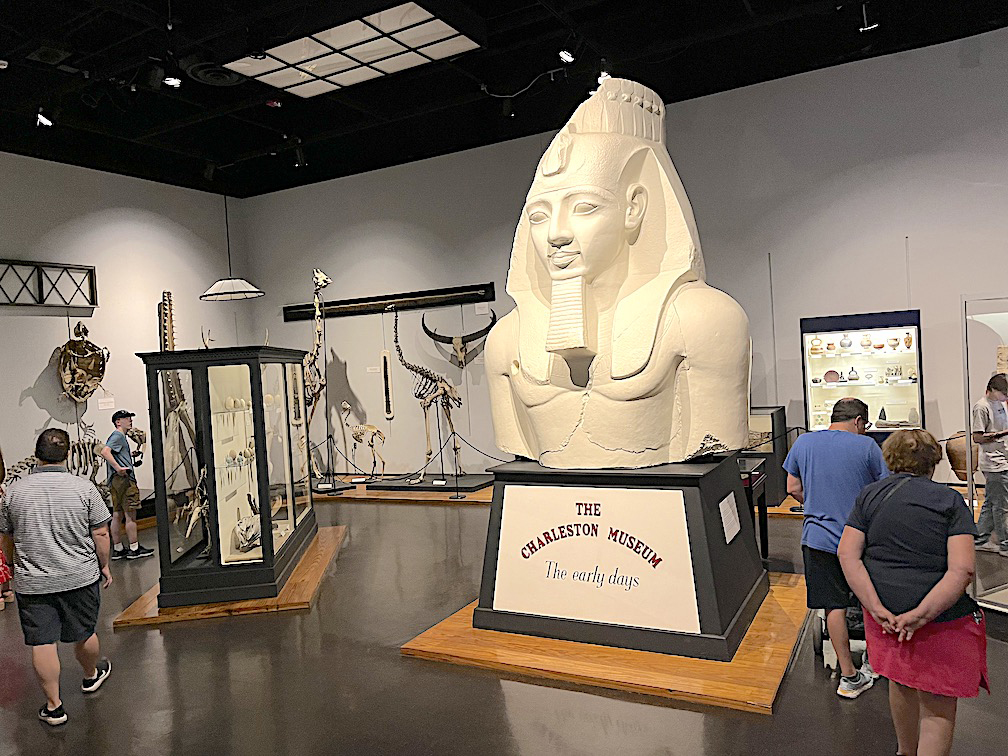
This plaster cast of Pharaoh Rameses II harkens back to the early days of the Charleston Museum, the first museum in America. Image by Tom Adkinson
|
CHARLESTON, S.C. – Yes, you should expect displays at the Charleston Museum to tell stories of the British colonization of South Carolina, the plantation economy of the antebellum South and the first shots of the Civil War fired at Fort Sumter in Charleston Harbor.
However, you’ll find plenty more, perhaps much of it unexpected. As you prowl through Charleston’s attic (that’s an oblique reference to the Smithsonian Institution’s nickname of “America’s Attic”), you’ll also find a stuffed polar bear, a plaster cast of a monumental statue of Pharaoh Rameses II and the gaping jaws of a megalodon (an extinct species of sharks that grew to more than 50 feet long and could have swallowed you and a couple of your kids in one gulp).
Perhaps that’s no surprise since the Charleston Museum is America’s first museum. It is marking its 250th year throughout 2023.
Members of the Charleston Library Society founded the museum on Jan. 12, 1773. Charleston was still a British colony, but curiosity about the world already had taken root in Charleston.
The founders embarked on a grand experiment in education that has thrived through a revolution, a civil war, hurricanes, earthquakes and economic disasters. The focus has changed over two and a half centuries, but educating visitors remains the goal.
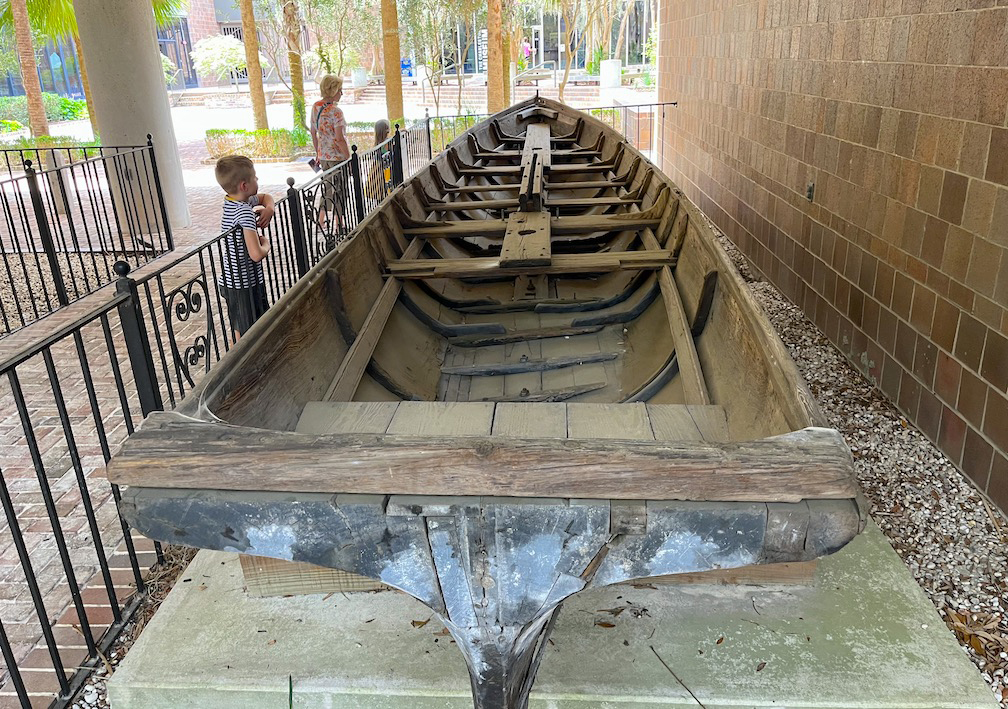
This plantation barge, built about 1855 by enslaved people with planks from a single cypress tree, is an outdoor exhibit at the Charleston Museum. Image by Tom Adkinson
|
The museum now has more than 2.4 million objects in its collection and attracts more than 100,000 people a year.
In its early years, the focus was of ancient civilizations and the wonders of the natural world. Today, the primary attention is on Charleston itself and the South Carolina Lowcountry, but the polar bear, the megaladon jaws and the statue of Rameses II haven’t disappeared.
Charleston is a city obsessed with its history, and that’s why three permanent exhibits draw particular attention.
“Becoming Americans: Charleston in the Revolution” is the first. It is here that you’ll learn about the 135 military engagements in South Carolina during the Revolutionary War and why the Battle of Sullivan’s Island (a victory for the Americans) led South Carolina to adopt the palmetto tree as its state symbol.
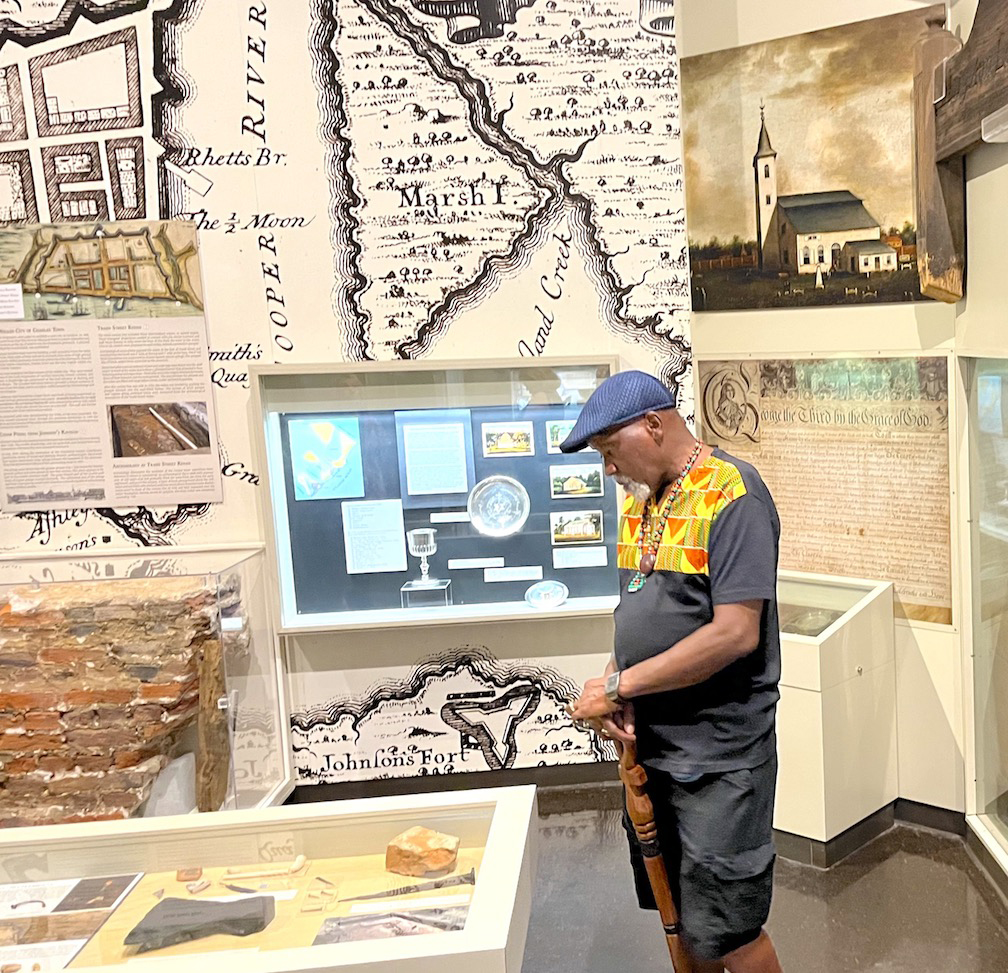
The history of the South Carolina Lowcountry and Charleston itself now are the focus of the Charleston Museum. Image by Tom Adkinson
|
The second is the “Lowcountry History Hall,” which traces the region’s history from the Native Americans, who where here long before British colonizers, through the development of the rice and cotton agricultural empire that evolved in the 1800s.
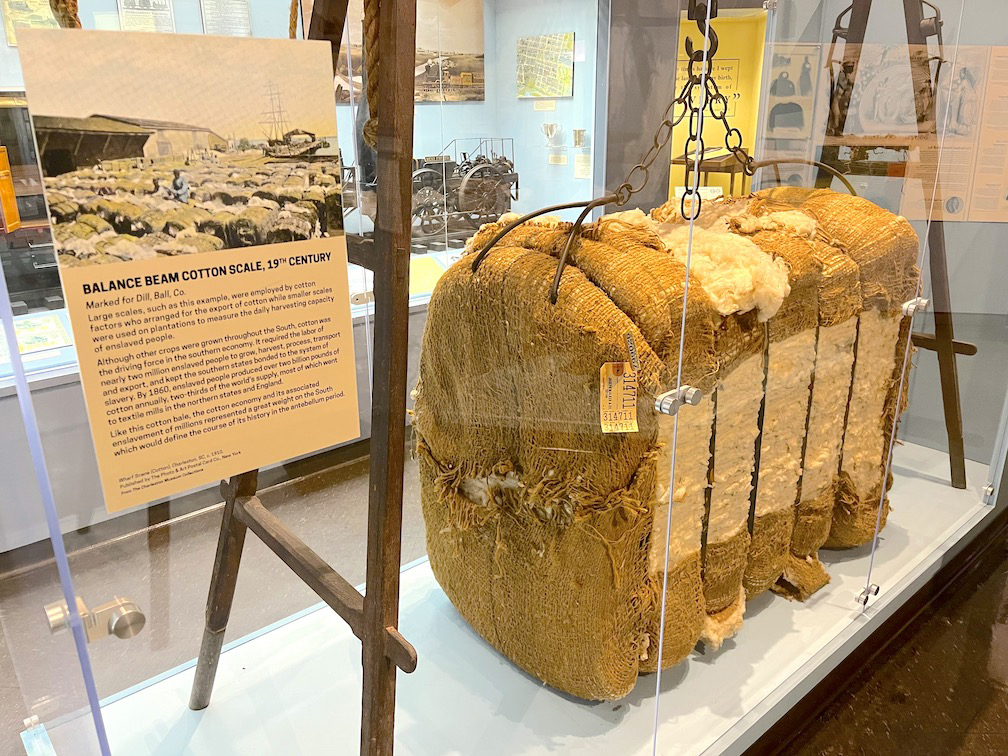
This export-size cotton bale helps tell the story of the cotton economy of South Carolina before the Civil War. Image by Tom Adkinson
|
Newer educational panels explain the scale of that agriculture and acknowledge that enslaved labor was the backbone of the system that brought wealth to local landowners, shipping magnates and textile mill owners in other states and in England. One display explains how a workforce of nearly 2 million enslaved people produced more than 2 billion pounds of cotton annually in the South, two-thirds of the world’s supply.
The third permanent exhibit that draws considerable attention is “City Under Siege: Charleston in the Civil War.” While the roots of the Civil War run deep, the war began right here on April 12, 1861. The exhibition illuminates the next four tumultuous years with paintings, historic photographs, military artifacts and timelines.
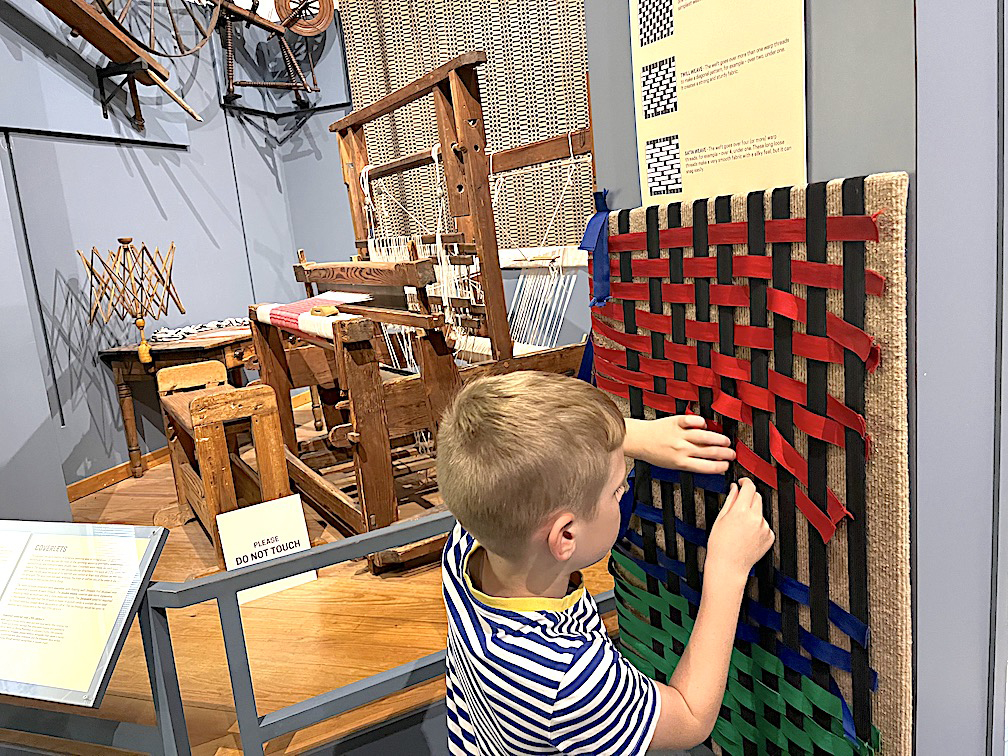
A pioneer loom makes more sense to a young visitor when he can do a bit of weaving himself. Image by Tom Adkinson
|
Young visitors’ eyes may glaze over in these three exhibits, but they sparkle upon arrival at “Kidstory,” where they can play and learn simultaneously. They can peer through microscopes at insects, learn what animals leave which scat, learn to tie sailors’ knots, hoist a pirate flag and even enjoy a kid-sized version of the Heyward-Washington House, where they can play with toys like those in colonial times and dress in reproduction clothing from the 1700s.
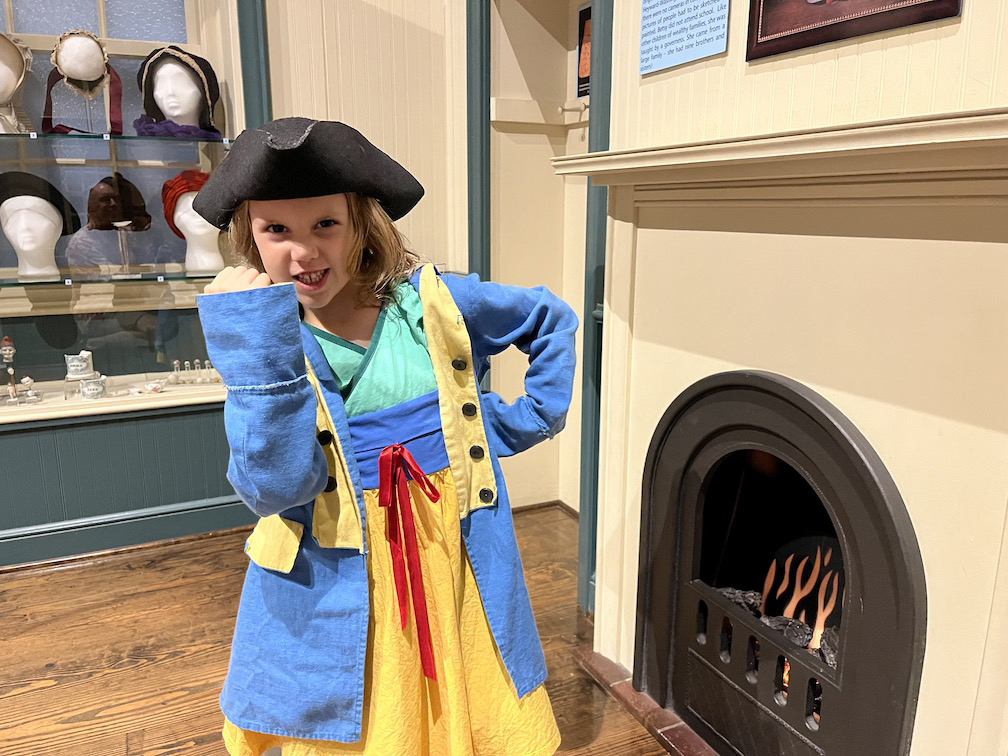
The Charleston Museum’s “Kidstory” exhibition includes costumes of colonial-era design that young visitors can use for dress-up play. Image by Tom Adkinson
|
The museum operates two historic homes that are separate from the museum’s primary building – the 1772 Heyward-Washington House, which was the home of one of four South Carolina signers of the Declaration of Independence, and the Joseph Manigault House, which was built in 1803.
Trip-planning resources: CharlestonMuseum.org and CharlestonCVB.com
|



